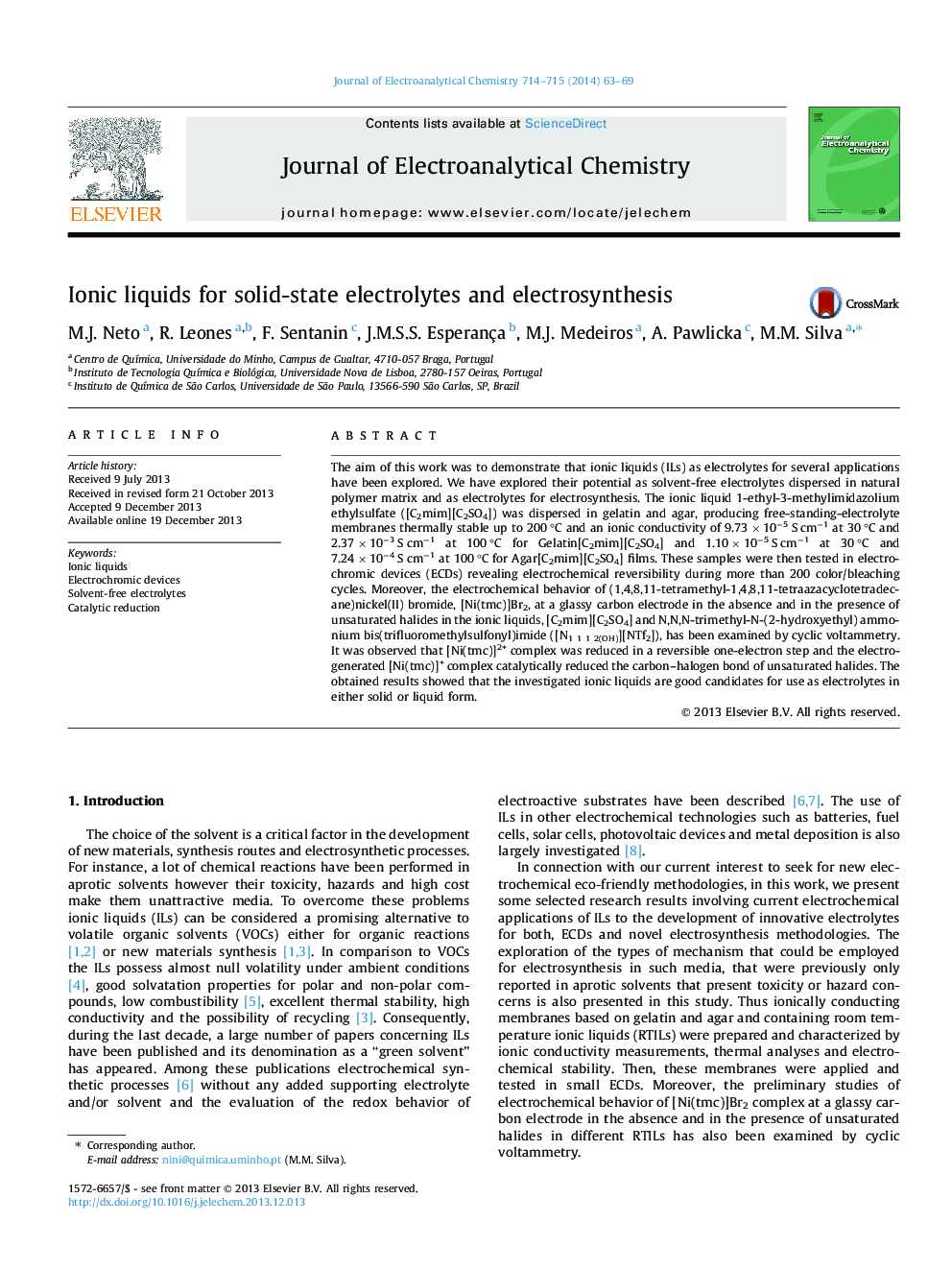| Article ID | Journal | Published Year | Pages | File Type |
|---|---|---|---|---|
| 218886 | Journal of Electroanalytical Chemistry | 2014 | 7 Pages |
•Ionic liquids (ILs) as electrolytes for several applications have been explored.•Innovative electrolytes for electrochromic devices (ECDs).•Exploration of the types of mechanism that could be employed for electrosynthesis in ionic liquids.
The aim of this work was to demonstrate that ionic liquids (ILs) as electrolytes for several applications have been explored. We have explored their potential as solvent-free electrolytes dispersed in natural polymer matrix and as electrolytes for electrosynthesis. The ionic liquid 1-ethyl-3-methylimidazolium ethylsulfate ([C2mim][C2SO4]) was dispersed in gelatin and agar, producing free-standing-electrolyte membranes thermally stable up to 200 °C and an ionic conductivity of 9.73 × 10−5 S cm−1 at 30 °C and 2.37 × 10−3 S cm−1 at 100 °C for Gelatin[C2mim][C2SO4] and 1.10 × 10−5 S cm−1 at 30 °C and 7.24 × 10−4 S cm−1 at 100 °C for Agar[C2mim][C2SO4] films. These samples were then tested in electrochromic devices (ECDs) revealing electrochemical reversibility during more than 200 color/bleaching cycles. Moreover, the electrochemical behavior of (1,4,8,11-tetramethyl-1,4,8,11-tetraazacyclotetradecane)nickel(II) bromide, [Ni(tmc)]Br2, at a glassy carbon electrode in the absence and in the presence of unsaturated halides in the ionic liquids, [C2mim][C2SO4] and N,N,N-trimethyl-N-(2-hydroxyethyl) ammonium bis(trifluoromethylsulfonyl)imide ([N1 1 1 2(OH)][NTf2]), has been examined by cyclic voltammetry. It was observed that [Ni(tmc)]2+ complex was reduced in a reversible one-electron step and the electrogenerated [Ni(tmc)]+ complex catalytically reduced the carbon–halogen bond of unsaturated halides. The obtained results showed that the investigated ionic liquids are good candidates for use as electrolytes in either solid or liquid form.
